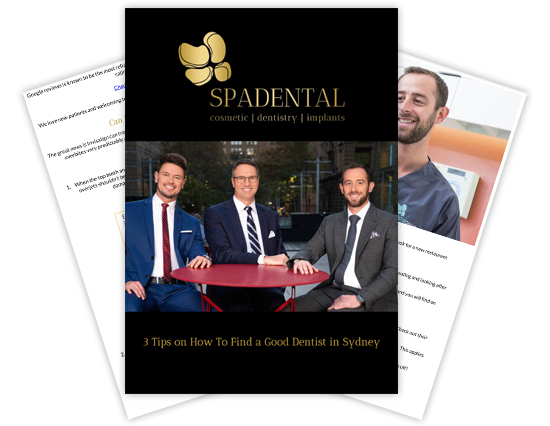Wisdom teeth; a guide from our dentist

Do you have wisdom teeth that are causing a headache?
At Spa Dental, our dentist Sydney knows pretty much all there is to know about wisdom teeth and will help assess whether it’s ok for these teeth to remain in your mouth or whether they need to come out. Great!
In this short guide, our dentist Sydney talks you through wisdom teeth and how we manage them at Spa Dental. Enjoy!
What are wisdom teeth?
The last set of teeth to come through, wisdom teeth are molars and will appear in most people between the age of 11 and 17. There are usually 4 of them; 2 at the top of the mouth and 2 at the bottom.
They are larger than other molars and, due to their late eruption, they can cause a myriad of issues, which our dentist Sydney will be able to mitigate with removal if needed. Their purpose has been debated by scientists and anthropologists for decades, but it has now been theorised that we developed them to help with the grinding of hard foods like nuts, raw meats and grasses.
But as we rarely consume raw, tough meats anymore, they have seemingly outlived their purpose in evolutionary terms.
When do they need to be removed?
There are a few surefire signs that you need to have your wisdom teeth removed.
If you have discomfort in the back of your mouth, or if you have swollen or tender gums, then our team will need to assess if it is worth leaving your wisdom teeth where they are.
Another potential issue that is common with wisdom teeth is them becoming impacted. This is essentially where the wisdom tooth erupts at an unusual angle and pushes against the roots of the nearby teeth. This can be very uncomfortable.
If you notice swelling in your jaw, earaches, headaches or even stiffness to your jaw after your wisdom teeth have erupted, these are all also indicators that you may need to have them extracted.
How are they removed?
Before our team at Spa Dental remove your wisdom teeth, we will first need to assess the complexity of the root system; this is done via an x-ray.
Many wisdom teeth have slanted roots or even roots that are curled or intertwined with those of nearby teeth. This can lead to complications with removal.
In such extreme cases, we will always aim to remove them surgically, which will include incisions into the gums and may involve the placing of stitches. Should your wisdom teeth have straight roots and have no associated issues then our team will seek to remove them using a simple extraction, which will involve numbing and simply pulling the tooth out.
Dry socket and other complications
Dry socket is a potential issue that is more commonly seen when wisdom teeth are extracted.
This is due to the larger than average size hole that is left in the gum. In short, dry socket occurs when the blood clot which forms after an extraction is removed, usually by the patient during brushing or with their tongue. It can also be caused if a blood clot doesn’t form post-extraction. This then exposes the underlying nerves and bone to the air, causing discomfort.
If you suspect that you have dry socket, call our team.
You will need to assess the extraction site for signs of infection, such as discolouration, pus, swelling and of course discomfort.
DISCLAIMER
All treatment carries risks. Individual consultation is required with one of our practitioners to ensure that the treatment is right for you.




